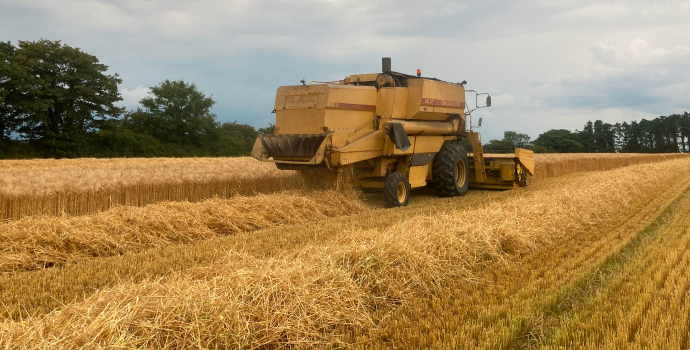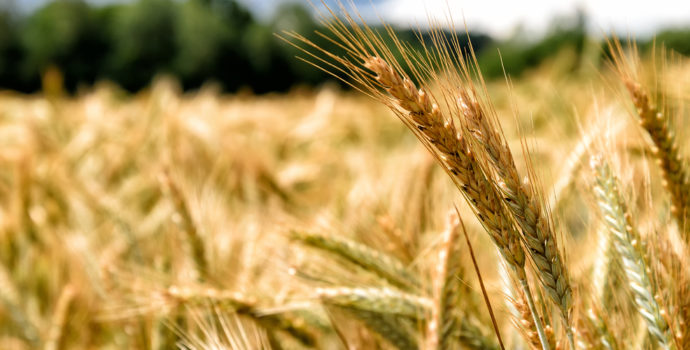Information Note on Sustainable Use Directive Proposals

The EU Commission has proposed a new amendment to the Sustainable Use Directive (SUD) for plant protection products. The Commission is concerned that pesticides contribute to biodiversity decline and furthermore the European Green Deal and Farm 2 Fork aims to reduce both the use of and risk from pesticides by 50% by the year 2030. The Commission has stated that the current SUD (2009/128/EC) has only been moderately effective, with little enforcement of Integrated Pest Management and limited effectiveness visible in Member State Action Plans. Taking this account, the Commission has published this proposal to better reflect the ambitions of the Green Deal and Farm 2 Fork.
Option 1
The EU puts in place non-legally targets to reduce pesticide use by 50%. Advisory and guidance systems for pesticides would be improved and improved precision farming techniques are used to reduce the level of pesticides applied and the associated risks of same. Prohibition of pesticides in sensitive areas is not mentioned.
Option 2
The 50% targets would become binding at EU level. Member states would set their own pesticide reduction targets using established criteria. The use of more hazardous pesticides would be prohibited in sensitive areas like urban public places. Pesticide users would need to keep electronic records on pesticide use and on integrated pest management. Independent advisory services would be mandatory to advise pesticide users annually.
Option 3
This option is the same as option 2 but the 50% reduction targets would become legally binding at EU and member state level. The use of all chemical pesticides would be prohibited in sensitive areas. Member sates would be responsible for setting their own reduction targets under national law.
Option 3 is the preferred option for the Commission.
Q. What exactly are sensitive areas?
Under Article 3 of the proposed regulation, sensitive areas are defined as the following:
(i) An area used by the general public, (ii) an area predominately used by a vulnerable group defined under EC 1107/2009 (iii) human settlements (iv) an urban area (v) a non-productive area under GAEC standard 8 (vi) an ecologically sensitive area, which means any of the following; any protected area under Directive 2000/60/EC, sites of community importance and any area for which the monitoring of pollinator species under forthcoming biodiversity rules.
Q. Is there a risk of a 100% pesticide ban in 2024?
Technically Nitrate Vulnerable Zones (NVZ) are classified as nutrient sensitive areas which fall under protected areas classified under EC 2000/60. The Nitrates Directive (ND) required each member state to introduce a programme of measures in vulnerable areas only. The ND programme of measures was implemented uniformly across the Republic of Ireland. This contrasts with the approach of other countries where measures were targeted at identified Nitrogen Vulnerable Zones (NVZ) on a more regional basis[1]. As a result of this broad-brush classification, Ireland does face a risk of being that the entire country could be classified as a sensitive area. This could prove very problematic as the criteria for vulnerable zones are defined under 2000/60EC as: “waters affected by pollution and waters which could be affected by pollution if action pursuant to Article 5 is not taken shall be identified by the Member States in accordance with the criteria set out in Annex I”. Article 5 in this instance refers to the Nitrates Action Programmes. Annex 1 criteria include:
“Whether groundwaters contain more than 50 mg/ 1 nitrates or could contain more than 50 mg/ 1 nitrates if action pursuant to Article 5 is not taken”.
In the EPA Water Quality Report 2016-2021, The average nitrate concentration in groundwater was below the threshold value of 37.5 mg/l NO3 (nitrate) at 96% of monitoring locations during 2016-2021.
While the stated aim of the Commission is to have this directive in place by 2024, the actual likelihood of this happening is slim. The proposals came in for criticism by representatives on the Agriculture and Fisheries Council in a debate held on the 31st August last. The proposals now must move to the Council of the European Union and then ultimately must be voted on by the European Parliament, all of which take time.
IFA Activity on the SUD
IFA submitted feedback to the EU Commission public consultation forum, which closed on September 19th 2022. IFA stated strongly that Option 1 is the only approach that can be considered out of the three proposed. A meeting was also held with PRCD officials in Backweston in September to discuss the proposed regulations.
Q. What happens next?
The next public consultation on the SUD will be at individual Member state level. DAFM have now opened this to submissions from the public with a closing date of January 20th 2023. IFA will be making a strong submission and encourages individual members to do the same.
IFA will be seeking a meeting with Minister McConalogue to discuss the SUD consultation and the significant impacts each proposed Option will have on Irish agriculture.
Public consultation on the EU Commissions proposal for a Sustainable Use of Pesticides Regulation.
[1] Buckley.C. (2012) Implementation of the EU Nitrates Directive in the Republic of Ireland — A view from the farm, Ecological Economics, (78), p29-36.



